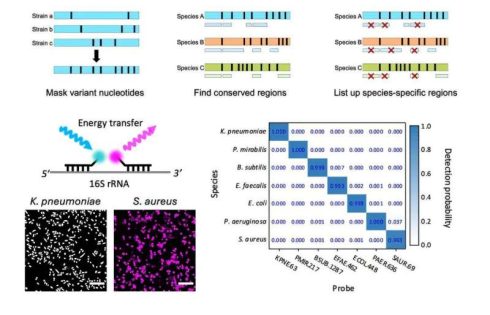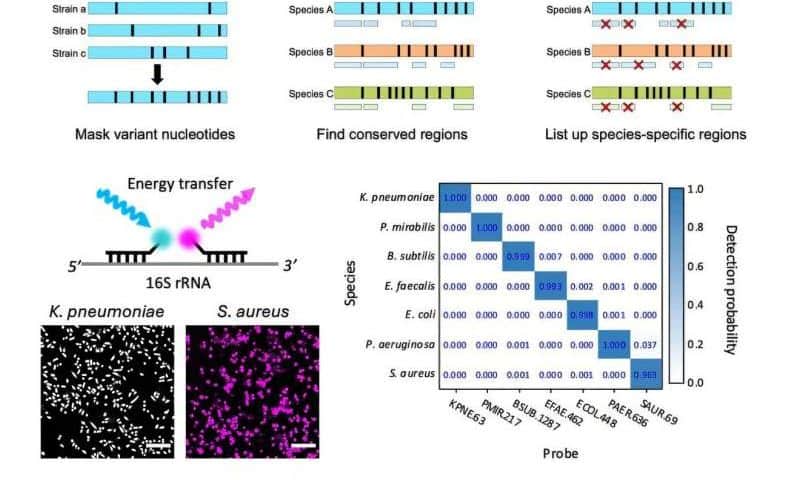
A joint team of professors—Hajun Kim, Taejoon Kwon, and Joo Hun Kang—from the Department of Biomedical Engineering at UNIST has unveiled a novel diagnostic technique that utilizes artificially designed polymers known as peptide nucleic acid (PNA) as probes. The research is published in the journal Biosensors and Bioelectronics.
The fluorescence in situ hybridization (FISH) technique works by detecting fluorescent signals generated when probe molecules bind to specific genetic sequences in bacteria. This innovative FISH method employs two PNA molecules simultaneously. By analyzing the genomic sequences of 20,000 bacterial species, the research team designed PNA sequences that specifically target the ribosomal RNA of particular species.
The method is significantly faster and more accurate than traditional bacterial culture and polymerase chain reaction (PCR) analysis, and it holds promise for reducing mortality rates in critical conditions such as sepsis, where timely administration of antibiotics is crucial.
PNA exhibits a higher sensitivity to sequence mismatches compared to conventional DNA-based probes and demonstrates superior penetration through bacterial cell walls.
Furthermore, the requirement for both PNA molecules to bind to their target site before generating a signal significantly reduces the likelihood of crosstalk, thereby enhancing accuracy in situations involving multiple overlapping bacterial strains.
In tests, the technology successfully detected seven bacterial species—including E. coli, Pseudomonas aeruginosa, and Staphylococcus aureus—showing over 99% accuracy for all species except S. aureus, which was detected with an accuracy of 96.3%. The method’s effectiveness was further validated in mixed bacterial samples. Both Enterococcus and E. coli were detected with over 99% accuracy when tested together.
The approach utilizing two PNA molecules is based on Förster Resonance Energy Transfer (FRET). This principle involves energy transfer from one PNA molecule to another when they are in close proximity, allowing for the measurement of the fluorescence emitted by the recipient molecule.
Professor Kim noted, “This method will aid in the diagnosis of infections requiring immediate antibiotic treatment, such as sepsis, urinary tract infections, and pneumonia, while also helping to reduce unnecessary antibiotic usage.”
The research team plans to conduct further experiments using blood samples taken from actual patients to explore clinical applications.

